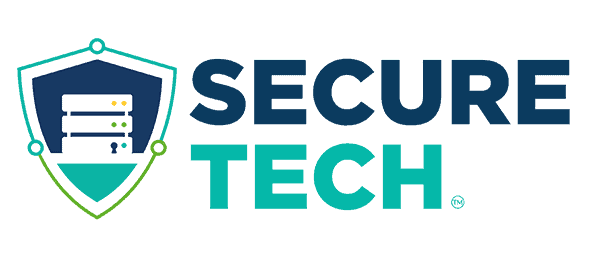disaster recovery plan solutions
Disaster Recovery is a cloud computing service model allowing businesses to secure their IT infrastructure and Backup their data in a third-party computing environment.
Disaster Recovery Services: Planning with SecureTech
Disaster Recovery is a cloud computing service model allowing businesses to secure their IT infrastructure and Backup their data in a third-party computing environment. It offers Disaster Recovery orchestration via an effective Software as a Service solution. It is essential to regain functionality and access to your IT infrastructure and data following any data loss disaster.
However, when it comes to choosing the best Backup and Disaster Recovery solution, it is important to understand Backup and Disaster Recovery (BDR) Solutions.
Across industries, business organizations understand operational downtime can quickly result in lost revenue.
Unfortunately, multiple things can cause a stop in your business operations.
These include:
- Human errors
- Natural disasters
- Ransomware attacks
- Security breaches
All these factors can jeopardize the IT resources’ availability which will ultimately lead to business operation downtime.
Any downtime can sap employee productivity, derail customer interactions, halt business operations, and destroy data. Having a backup and disaster recovery plan in place is critical to minimize the impact of unplanned data loss and downtime on your business.
What is Backup and Disaster Recovery
It is always important to understand the fact that Backup and disaster recovery are distinct.
Backup is a process to create a copy (or many copies) of your business’s data. The process of backing up data is meant to protect it in case of any accidental deletion, software update issues, database corruption, or any other problem that leads to data loss. With a properly managed backup, you can restore your lost data to keep your business operations running smoothly.
On the other hand, disaster recovery is a process to quickly and efficiently reestablish access to data, applications, and other IT resources following an outage. In the case of an outage, you’re switched over to a redundant set of storage systems and servers until the primary data center of the business organization is functional again.
Some business organizations may mistakenly think of Backup as the same as disaster recovery. However, when disaster strikes, you need a recovery plan in place to take the stored data and restore it. To minimize operational impact, you need to have a robust, effective, and properly tested disaster recovery plan in place to ensure the continuity of your business.
How Does Backup and Recovery Work?
A backup and disaster recovery plan depends on a set of procedures, tools, and policies to get your business operations and important IT infrastructure and systems back in working condition following any data loss event caused by human error or a natural disaster.
Various factors can lead your business to disaster. Some of the most important ones include malicious attacks, improper software updating, software or hardware failure, data corruption, sudden power outages, and many more.
Having a backup and disaster recovery plan, however, will ensure you have the fastest and most efficient method to restoring full operation.
- It can be done by replicating data and systems on any alternate site for recovery, having servers that are all set manage your business operations, and bring your business online again.
- An efficient backup and recovery plan works by hosting and replicating servers in a vendor’s third-party facility.
- In case of any disaster that stops the technological systems of your business, a disaster recovery plan will be executed by a third-party vendor.
Overall, the availability of a Backup and disaster recovery as a service solution has the potential to let organizations save their money by reducing the need for provisioning and managing their own off-site BDR system. However, to make the most out of these, business organizations must evaluate their needs and make sure the provider’s policies fulfill them.
SecureTech offers the best Backup and disaster recovery solution.
SecureTech is the best place to get a top-notch Backup and Recovery plan for your business. Our experienced and knowledgeable IT professionals provide you with a personalized Backup and recovery solutions designed specifically for your systems and dataset.
How is SecureTech’s backup and disaster recovery solution best for you?
When it comes to choosing the best data backup and disaster recovery plan, SecureTech will build a unique solution that fits your business needs. Here are some of the ways SecureTech works to fulfill your business’s intentions:
- An on-premises Backup and disaster recovery plan will save images of the entire system to your BDR appliance.
- We also set up additional backups on third-party storage solutions to protect your data and IT infrastructure.
- Based on the backup schedule we agree on, SecureTech will send snapshots of the data being backed up.
- To adhere to data disaster protocols, we manage copies of your important and confidential data on multiple sites. This may include data centers, on-site backups, or the cloud. All of these combined makes sure that even if one location is compromised, we have your data secured elsewhere.
Ultimately, by having SecureTech’s backup and disaster recovery services, you can rest easy knowing we’ve equipped your business with all the necessary levels of data protection you require.

The value of a BDR system
In the case of a disaster or data breach, BDRs provide a resource of uncompromised data that you can easily use to get your business up and running again. In most cases, you can get your office back up and running within minutes for business continuity.
Businesses can lose hundreds of thousands of dollars in down-time if their systems are down. If your systems are down, customers won’t be able to purchase your products or browse your website.
In addition to a potential public relations issue, businesses can face compliance fines if they do not have up-to-date backup strategies. BDRs help avoid lost revenue if your systems fail or facing fines by not providing a disaster recovery protocol for your data.
The purpose of Backup and recovery
The basic purpose of a backup is to create one or multiple copies of your data which you can easily use to recover it in the case of primary data failure. These primary data failures can be due to hardware or software failure, human-caused events, data corruption, or anything else.
However, backup copies will let you restore your data from an earlier point and help the business recover from any unplanned or unwanted event of data loss.
Storing an additional copy of your business data at a secure location is highly critical to protect against data corruption and primary data loss. The additional copies of data must be stored on a separate medium. You can choose the medium based on your personal preferences. However, cloud storage containers are the most commonly used medium for secure storage.
For the best results, you must backup your data on a regular basis. It is essential to avoid any kind of data loss between backups. The longer the time that passes between two consecutive backup copies, the higher your potential for data loss will be recovering your data. Having multiple copies of a Backup gives you the flexibility of restoring data to a chosen point.
Disaster recovery services
Today, data is literally more valuable than oil. It’s the lifeblood that businesses use to determine both internal and external functions. It is important to consider disaster recovery services and to have a plan to ensure business continuity.
Data is also incredibly vulnerable. From cyberattacks to natural disasters, there’s no shortage of events that can leave data compromised.
Backing up your data via disaster recovery services is now more important than ever. At SecureTech, we’re proud to offer cutting-edge disaster recovery services that can be scaled to suit any business.

Determining disaster recovery protocol
To determine how heavily you should invest in a disaster recovery protocol, you need to calculate how much a potential server outage or systems shutdown could cost your business. You can use the following formula: Revenue/workdays per year / open work hours.
Using this calculation, you can determine just how harshly a data breach or systems shutdown would affect your business based on how your employees are concentrated.
Here’s an example: Say you have a small business that’s turning over $10 million per year. The company is open for 22 days per month, and utilizes eight operating hours per day. Moreover, 25% of the business’s critical employees are located at company headquarters, and would therefore be immediately affected by a systems outage or data breach.
If we plug those numbers into the above formula, here’s what we get: $10 million/264 workdays/8 hours per day = $4,734 of revenue lost per hour of downtime.
Following this calculation, we can then determine how badly a data breach or systems shutdown would affect the company headquarters: $4,734 per hour, lost company-wide; .25 = $1,183 lost in revenue at the company headquarters, specifically. This calculation can help identify the tolerance for downtime and outages. How much data loss can you tolerate? How much downtime can you afford?
Backup solutions for small business
If you are running a small business, you understand the fact that your business organization can’t afford to have an ineffective backup and disaster recovery plan in place. The longer it takes to recover lost data after an accidental data loss event, the longer your employees will have nothing to do, and ultimately, they will sit idle for a longer period of time.
As a result, you won’t be able to complete critical processes of your business that rely on technology.
- Even more, if it will take days to regain your business access after a disaster, then it will definitely result in the loss of customers. In both cases, you will lose precious time and your hard-earned money.
- To avoid the loss of income, investing in the best backup solution for your business is a justified cost.
In most cases, business organizations prefer to choose managed backup and disaster recovery services. With this option, you can hand over all the responsibilities of planning and managing an effective and efficient backup and disaster recovery plan to your IT vendor. With one less thing to manage, you have the time to focus on what’s most important, your business!
FAQs
Backup and disaster recovery is a set of tools, processes, and policies that ensure the continuity of essential IT infrastructure and systems after any unplanned and sudden disaster.
The scope is the major difference between backup and disaster recovery plans. A backup plan is all about creating copies of your business data. At the same time, a disaster recovery plan is a complete strategy across systems and employees to restore business operations after an unplanned disaster.
Testing the effectiveness of a disaster recovery plan is essential to develop an effective strategy. However, there are multiple ways you can use to test a disaster recovery plan, including:
- Simulation
- Walk-through test
- Paper test
- Cutover test
- Parallel test
RTO and RPO are two key metrics of disaster recovery and stand for Recovery Time Objective and Recovery Point Objective, respectively.
RPO is here to measure the max. Acceptable data loss amount along with the data you need to reenter after a sudden downtime.
While RTO is the possible duration of service and time level across the network, which is essential to restore to avoid unwanted consequences.
